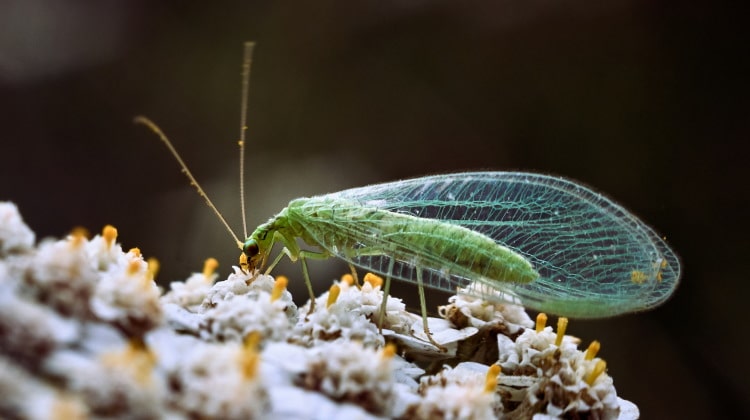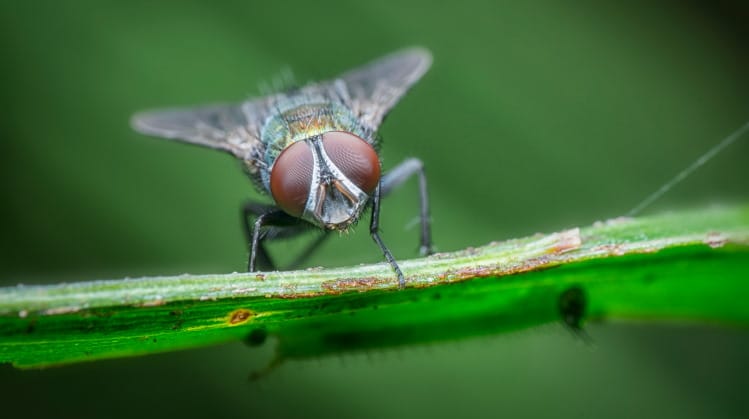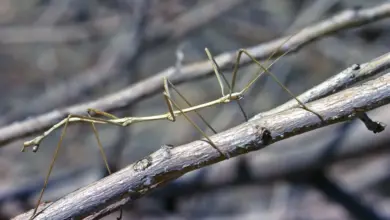Do Crickets Eat Fruit?
Do crickets eat fruit?
Yes, crickets eat fruit. As you may know, crickets are omnivores, which means that they can eat fruits, plants, and animal matter. Many crickets will choose to indulge in fruits.

Fruit flies tend to be high in carbohydrates and other nutrients, which are necessary for a cricket’s survival. They especially love sweet foods. Apples, strawberries, grapes, and even fruit juice or nectar are good examples.
These insects are especially drawn to these types of fruits due to their sugar content. The soft texture that fruits have which makes it easy for crickets to bite into is another reason for this.
In particular, the snowy tree cricket that lives in certain areas of North America is especially attracted to fruits.
Snow tree crickets love apples, peaches, and grapes. Not only do they eat these fruits directly, but they also love eating other insects that the fruit attracts, like flies, moths, and beetles.
However, not all fruits are appealing to crickets. Some fruits, like citrus fruits, are too sour for them to eat. This may be due to the acidity of these fruits or the bitter taste that some of them have.
For instance, lemons have high levels of citric acid, which can be deadly for crickets if consumed in large quantities.
Despite this potential danger, crickets continue to seek out fruits for their high nutritional value. So if you see your pet cricket munching on an apple or piece of melon, don’t panic! It’s just getting the nutrients it needs to survive in its natural habitat.
Did you Know?
Many farmers will attract crickets to their farming areas by placing fruit peels or other fruit parts in their fields.
Do Crickets Eat Bananas?
Yes, crickets eat bananas, in fact, they love them! Bananas are sweet and soft fruit that crickets find very appealing. They contain high levels of sugar and other nutrients, which help to energize crickets as they go about their day.
Crickets will often seek out bananas in farms or orchards, where they can easily find these large fruits hanging off the trees. In addition, they will also consume banana peels, the skin of the fruit that is often discarded.
However, some crickets do have a distaste for certain types of bananas. For example, some unripe bananas tend to be too sour for crickets to enjoy. The unripe bananas are acidic as they have a pH of around 5.6, which causes them to have high levels of bitter compounds.
Like anything, too much of a good thing can be bad. Although bananas are a good source of nutrition for crickets, it also has a very high content of sugar, which is something to keep in mind.
If you are keeping crickets as pets, it is important to monitor how many bananas they eat in their diet. This is to make sure they don’t consume any excess sugar, which could cause health problems.
In conclusion, crickets love bananas. However, it is important to be mindful of how much they consume and to ensure that you are providing them with a balanced diet overall.
What Do Crickets Eat in the Desert?
You may think crickets can hardly thrive in deserts due to their harsh environment, but this is definitely not the case. There are about 100 species of true crickets documented in virtually every region in the United States.
This includes dry places like the Mohave, Chihuahuan, Great Basin, and the Sonoran Desert which are home to a vast amount of cricket species.
So, what do crickets eat in the desert? Although food is usually scarce for these insects in these environments, they typically feed on:
- Worms
- Small sap-sucking insects
- Eggs of other invertebrates
- Fungi
- Decaying plant material
- Seeds
- Nuts
- Fruits that are available in the region
Crickets in the desert have adapted to survive in this extreme climate by developing a number of strategies. Some examples of these are eating different types of food and hiding from predators.
For example, crickets eat leaves, grasses, seeds, nuts, and fruits that are available in the desert. They can also store extra energy in specialized organs called fat bodies, which allows them to survive long periods of time without food.
To avoid detection from predators, crickets hide in burrows or under rocks during the day and come out at night to hunt for food.
They are also able to blend into their surroundings by growing camouflage coloring on their wings. This helps them hide from hungry animals that might be looking for a meal.
Overall, crickets in the desert are able to thrive in this challenging environment due to their smart and adaptive behaviors.
Do Crickets Eat Ants?
Yes, since crickets are omnivores, they can often go hunting for smaller and weaker insects. They often do this when they decide to take a break from their usual plant diet. Crickets usually eat smaller insects and ants are all game, especially the vulnerable and young ones.
Crickets are not picky eaters, so if ants are available then they will happily consume them. This is especially true for the Camel Cricket, which is popular for its voracious appetite and love of ants. These crickets will readily eat up any type of ant, alive or dead.
However, fire ants may not be as appealing to crickets. Due to the toxic nature of these ants and their aggressive behaviors, many crickets will avoid these insects altogether.
Fire ants have highly pungent chemicals, which we call formic acid. This is what they release from their mandibles to hurt predators. This can be quite painful and uncomfortable for crickets.
Ants are also a much-needed source of protein for crickets, so it makes sense that they would be on the menu. Crickets are constantly hunting for food, so if an ant colony is nearby, they will likely take advantage of the easy prey.
Crickets do eat ants, but there’s no reason to worry because their populations won’t cause any harm to the ant colonies. In fact, the two species will likely co-exist together without any negative effects.
Do Crickets Eat Other Bugs?
Yes, crickets do eat other bugs, and it’s surprising to know that they can devour a large range of insects without breaking a sweat. Crickets have the ability to easily digest their meals, and they can eat worms, larvae, ants, spiders, beetles, and even grasshoppers.
An acid found in cricket guts which we call chitinase allows crickets to break down their food much more easily. This acid essentially helps them to dissolve the insect’s exoskeleton, allowing them to fully digest their meal.
Dead or alive, crickets will consume other bugs if a plant source isn’t readily available. Crickets are very opportunistic feeders, so they will eat anything that is easily accessible and filling.
Crickets such as house crickets, field crickets, camel crickets, and cave crickets tend to feed on other bugs. In terms of hunting prey, it’s never too hard for these creatures to catch food. This is because they use their antennas to track the exact location of their prey.
The cricket’s powerful front legs are very capable of grabbing and holding onto their food. Furthermore, the bug’s strong jaws can easily chew through even the hard exoskeletons of their victims.
Needless to say, crickets have developed a unique defense mechanism in the form of jumping and using their hind legs as a means of flight. While jumping, crickets can reach heights up to six feet and jump distances of over five feet.
Because of this, eating other bugs is fairly easy for crickets, since they can jump and catch their prey without any trouble.
Disclaimer
Earthlife.net does not provide medical advice. We do our best to help users understand the science behind living beings; however, the content in the articles and on the website is not intended to substitute for consultation with a qualified expert. By interacting with the website and/or our email service, you agree to our disclaimer. Remember that you must consult a specialist before using any of the products or advice on the web.




